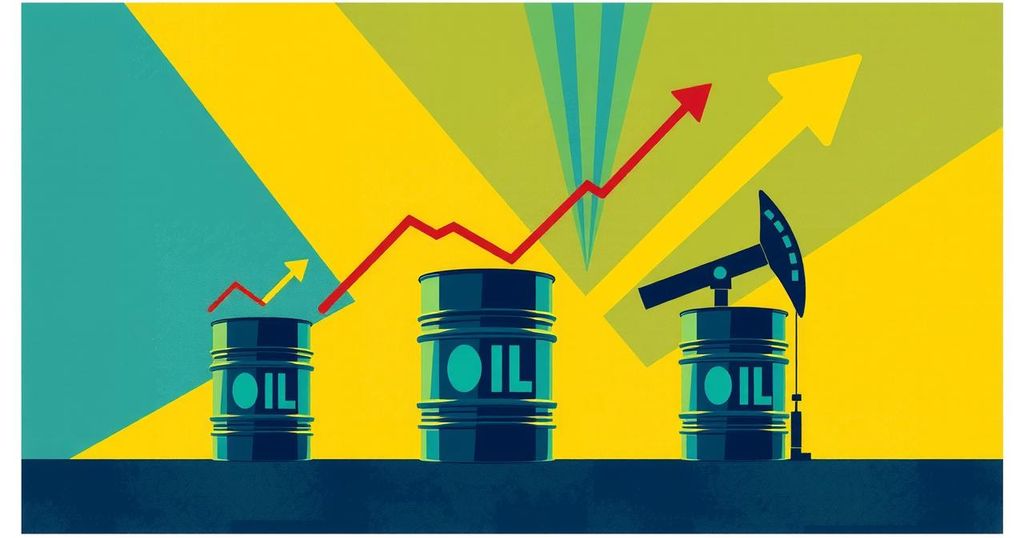WTI Oil Prices Rise Amid Trump’s Geopolitical Threats on Russia and Iran

Crude oil prices surged due to President Trump’s threats of tariffs on Russian oil and military action against Iran. WTI rose 2.65% to $71.20, while Brent increased 1.47% to $74.71. The market is reacting to ongoing geopolitical negotiations regarding the Russia-Ukraine ceasefire and Iran’s nuclear program, as industry executives forecast rising oil prices.
On Monday, U.S. benchmark crude oil prices experienced a notable increase of 2.65%, with West Texas Intermediate (WTI) rising to $71.20, up by $1.84, amid concerns regarding President Trump’s potential tariff threats aimed at Russian oil buyers and the possibilities of military action against Iran. Similarly, Brent crude rose by 1.47%, reaching $74.71.
These fluctuations in oil prices are in relation to two significant geopolitical negotiations: one concerning a ceasefire between Russia and Ukraine, and another focused on Iran’s nuclear program. Trump cautioned that he might impose secondary sanctions on Russia’s energy sector if an agreement to halt violence in Ukraine is not reached.
Trump stated during an interview with NBC, “If Russia and I are unable to come to an agreement to stop the violence in Ukraine, and if I believe Russia is responsible… I will impose secondary tariffs on all Russian oil exports.” This warning came in the wake of President Putin’s comments questioning the legitimacy of Ukraine’s government and suggesting changes in leadership for peace discussions.
In addition to the tensions with Russia, concerns regarding Iran’s nuclear deal are paramount. Trump threatened military action, stating, “If they don’t make a deal, there will be bombing…the likes of which they have never seen before.” Despite these threats, he acknowledged that negotiations were ongoing, while simultaneously extending a 25% indirect tariff threat to Iran.
Iran, for its part, has indicated it will not engage in direct negotiations with the U.S. unless the United States alters its approach. Furthermore, oil and gas executives from the Dallas Fed Energy Survey reported expectations of WTI averaging $68 per barrel over the next six months, $70 for the next twelve months, and increasing to $74 for two years, potentially reaching as high as $80 in five years.
In summary, the surge in WTI prices can be attributed to ongoing geopolitical tensions, particularly regarding U.S.-Russia relations and the Iranian nuclear deal. Trump’s threats of tariffs and military action significantly impact market sentiment, leading to fluctuating oil prices. These developments underscore the intricate connection between geopolitics and energy markets, with future forecasts indicating a steady rise in oil prices amid these uncertainties.
Original Source: oilprice.com








